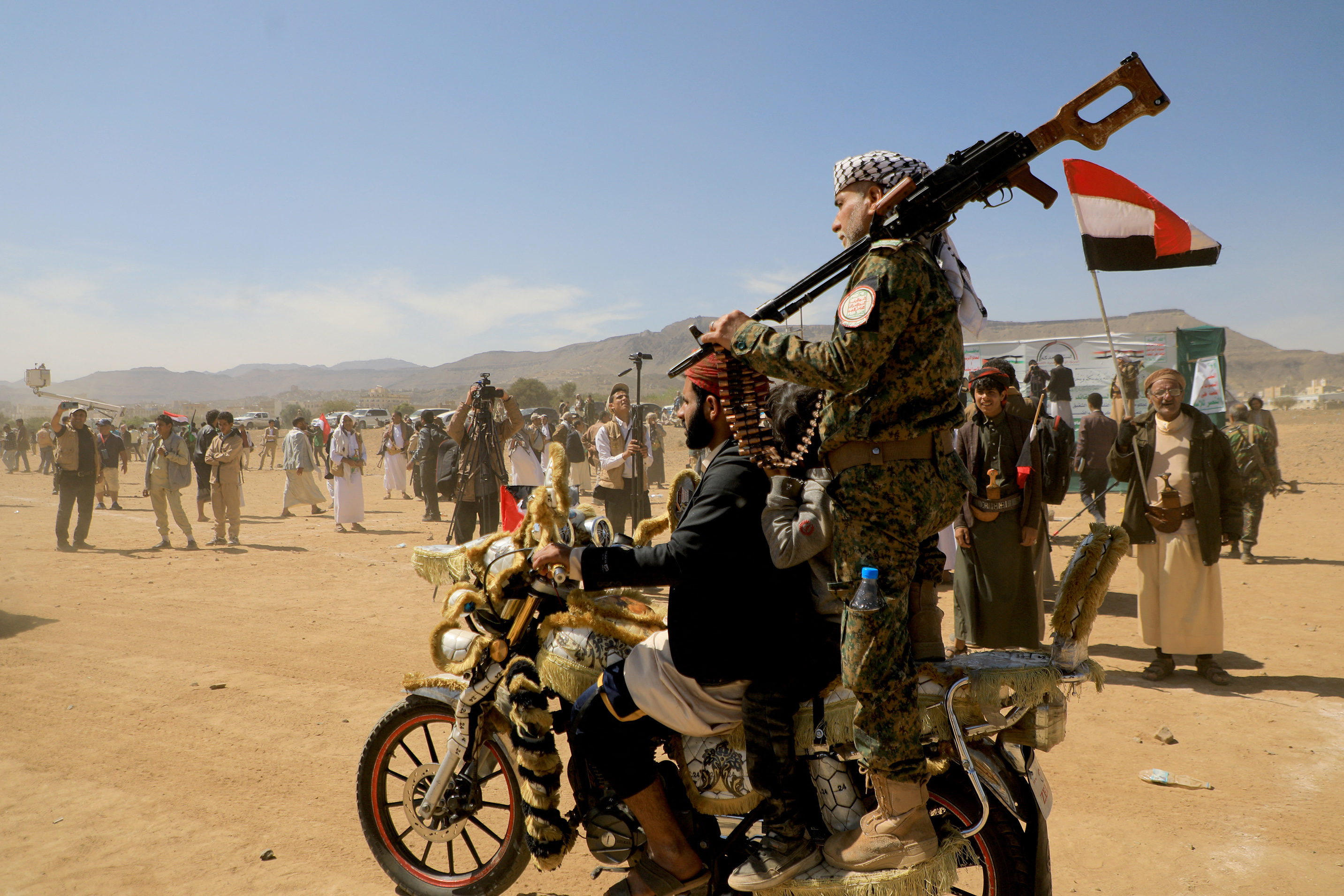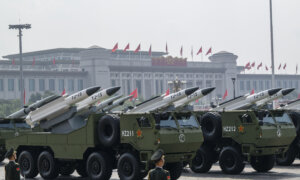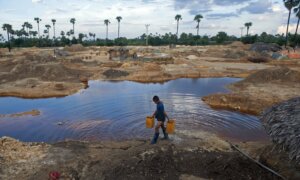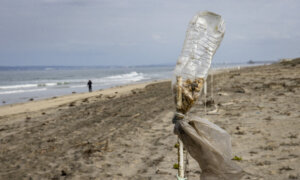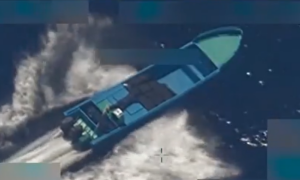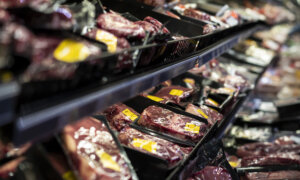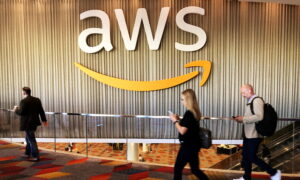The United States’ strategy for countering the Chinese Communist Party’s (CCP) ambitious “Belt and Road Initiative” (BRI) has encountered significant setbacks due to escalating Houthi attacks in the Red Sea. The developments suggest an increasing Chinese influence in the region, with implications for the balance of power.
Central to the U.S. strategy is the India-Middle East-Europe Economic Corridor (IMEC), a project that aims to offer an alternative to China’s expansive infrastructure network. However, the ongoing conflict between Israel and Hamas, along with the disruptive actions of Yemen’s Houthis in key Red Sea shipping lanes, has severely hampered the progress of IMEC.
High-profile signatories, including Saudi Arabia, the European Union, India, the UAE, France, Germany, and Italy, have aligned with the United States, committing to a joint effort in the project.
IMEC is designed to feature two primary corridors: the Eastern Corridor, which connects India with the Arabian Gulf, and the Northern Corridor, linking the Arabian Gulf with Europe. The project envisions a robust ship-rail transport network that complements existing maritime and road routes, facilitating seamless cargo movement across India, the UAE, Saudi Arabia, Jordan, Israel, and Europe. Its completion is expected to bolster regional supply chain security and enhance trade efficiency.
The United States views IMEC as a multipurpose strategic asset. It is not only a counterbalance to China’s influence in the “Global South” but also a catalyst for fostering closer ties between Israel and Saudi Arabia.
The “Global South” encompasses a wide array of regions, including the entirety of Africa, Latin America, the Caribbean, and Asia, excluding Israel, Japan, and South Korea. It also covers Oceania, except for Australia and New Zealand.
Romana Vlahutin, former EU envoy for connectivity and now a distinguished research fellow at the German Marshall Fund, highlighted the project’s geopolitical significance.
“This is a project that made Iran, China, Russia, even Turkey nervous,” she remarked, as quoted by Bloomberg. “Maybe that is the best proof of its strategic importance.”
Yet, the geographical and political landscape traversed by IMEC presents inherent challenges to its realization and sustainability.
Challenges Facing the IMEC Initiative
Carl Schuster, former director of operations at the US Pacific Command’s Joint Intelligence Center, outlined the project’s logistical hurdles in an interview with The Epoch Times.
Envisioned as a maritime corridor stretching from Saudi Arabia to India, the route necessitates navigation through either the Iran-dominated Strait of Hormuz or the Bab el-Mandeb Strait, near Houthi-controlled regions of Yemen and Eritrea. A proposed railway traversing Iraq would require coordination with Iran and Pakistan to reach India, Mr. Schuster said.
“The IMEC was a project [that] required Iran and Pakistan to cooperate with India and for Saudi Arabia, Jordan, and Iraq to cooperate and, of course, Jordan and Saudi Arabia to cooperate with Israel,” Mr. Schuster explained.
Mr. Schuster expressed cautious optimism about potential cooperation between Jordan, Saudi Arabia, and Israel but remained skeptical about the prospects of overcoming opposition from Hamas and Iran.
“I was optimistic about Jordan and Saudi Arabia cooperating with Israel, but there was always a high probability Hamas and Iran would do all that they could to sabotage the effort.”
In November last year, Israeli President Isaac Herzog publicly accused Iran of masterminding the Oct. 7 terrorist attack by Hamas to undermine IMEC. The project symbolizes not just economic integration but also a step toward peace in the Middle East
The aftermath of the Israel-Hamas conflict and subsequent Houthi assaults in the Red Sea led to a pause in IMEC discussions, while civilian casualties in Gaza have prompted countries like the UAE to approach the initiative with increased caution.
Mr. Schuster further noted the strategic implications of the Houthi attacks, linking them to Iran’s broader agenda to derail regional trade initiatives and hinder the Saudi Arabia-Israel rapprochement.
Beijing perceives IMEC as a direct competitor to its BRI, adding another layer of complexity to the geopolitical dynamics in play.

Members of the Yemeni Coast Guard affiliated with the Houthi group patrol as demonstrators march through the Red Sea port city of Hodeida in solidarity with the people of Gaza, on Jan. 4, 2024. (AFP via Getty Images)
Countering China’s BRI: IMEC’s Strategic Role
In September 2013, Chinese leader Xi Jinping launched the “Silk Road Economic Belt” during his visit to Kazakhstan. This initiative was soon complemented by the “21st Century Maritime Silk Road.” Together, these projects, known as the BRI, forge a network connecting China with regions across Central Asia, South Asia, Southeast Asia, the Middle East, Africa, and Europe.
The BRI has evolved significantly since its inception, expanding its reach globally. Its influence extends beyond economics, enabling the CCP to wield political leverage. Nations involved in the initiative have faced debt crises, and the CCP has capitalized on these situations by acquiring control over key mineral resources and strategic ports, thereby extending its influence into the military domain.
In response, the United States has initiated several countermeasures. The Trump administration enhanced the capabilities of the Export-Import Bank and established the Development Finance Corporation. Subsequently, the Biden administration introduced the “Build Back Better World” (B3W) initiative, now rebranded as the “Partnership for Global Infrastructure and Investment” (PGII).
A key component of this counter-strategy is IMEC, designed to connect India, the Arabian Gulf, and Europe through an integrated network of rail and shipping lines. IMEC not only aims to bolster supply chain security and resilience but also to stimulate economic growth and enhance trade among U.S. allies.
European Commission President Ursula von der Leyen has noted that IMEC could reduce trade times between India and Europe by 40 percent.
However, the ongoing Israel-Hamas conflict and the Houthi attacks in the Red Sea have impeded IMEC’s progress, inadvertently benefiting the CCP.

An aerial picture of the MSC Allegra and Ever Atop container ships, docked beside container cranes at the UK's largest freight port, in Felixstowe on the east coast of England, on January 27, 2024. (Ben Stansall/AFP via Getty Images)
Scrutiny Over CCP’s Alleged Involvement
Recent investigations have raised questions about the origins of the weaponry used by Houthis. Fabian Hinz, a researcher at the International Institute for Strategic Studies in London, noted that the Houthis had deployed advanced anti-ship ballistic missiles, namely the “Asef” and “Tankil,” which are likely based on Iranian designs.
Significantly, a prominent Chinese military blogger, “Korolev,” who boasts over 6 million followers, suggested that the anti-ship weapons used by the Houthis may have originated from China. He traced the lineage of these missiles back to the CCP’s Red Flag 2A surface-to-air missiles, which were exported to Iran in the 1980s, and to the B610 and B611 missiles developed by China’s Second Academy of Aerospace Science and Industry.
Adding to these revelations, another Chinese military commentator, Zhang Bin, commented on TikTok about the Houthis’ use of Chinese missile technology in maritime attacks.
This speculation is supported by an incident in 2013, wherein the U.S. Navy destroyer USS Farragut and the Yemeni Coast Guard intercepted a shipment of weapons heading to Yemen. The cargo included C-4 explosives, ammunition, and anti-aircraft missiles, with markings indicating they were produced by the China Precision Machinery Import-Export Corporation.
Notably, the seized missiles were identified as the “FN-6” type, employed by the CCP military.
Mr. Schuster, offering his perspective, stated that the CCP appears to be indirectly supporting groups hostile to U.S. interests, thereby distracting American focus and resources from the Asia-Pacific region.
